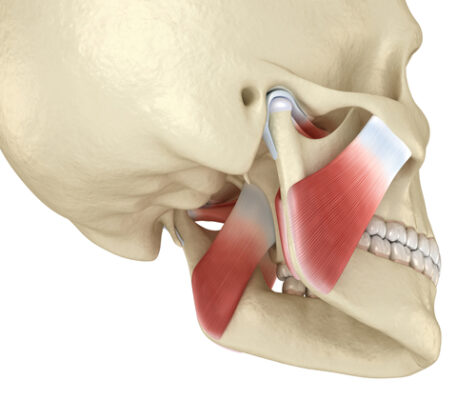TMJ Disorders in Melbourne, FL
The National Institute of Dental and Craniofacial Research (NIDCR) highlights that disorders related to the temporomandibular joint, known both as TMJ and TMD, stand as the primary cause of persistent facial discomfort and jaw malfunction. It’s believed that these joint issues impact over 10 million individuals across the U.S.
Understanding the Temporomandibular Joint:
The human anatomy comprises two temporomandibular joints linking the left and right segments of the lower jaw to the skull’s temporal bone. These joints, along with their connected muscles, ligaments, and tendons, enable diverse jaw movements. A cushioning disc between the jaw’s rounded sections and the temporal bone of the skull facilitates vital activities like chewing, speaking, and yawning. Given the TMJ’s multifaceted movements, it’s deemed one of the body’s most intricate joints and challenging to address when complications surface.
TMJ Disorder Varieties and Indicators:
There are three primary categories of TMJ disorders:
- Myofascial pain- Pertains to discomfort around the jaw joint due to muscle tension or spasms.
- Internal derangement- Relates to disc displacement, jaw dislodgment, or condyle injuries.
- Degenerative joint condition – Such as arthritis.
Factors like prolonged teeth grinding, known as bruxism, jaw injuries, and specific arthritis types increase the risk of TMJ disorders. Symptoms can widely vary, encompassing ear pain, tinnitus, headaches, backache, neck discomfort, vertigo, muscle twitches, and more. Some might experience TMJ issues briefly, while others might endure long-term challenges despite rigorous treatment.
Evaluation and Therapeutic Approaches:
In diagnosing TMJ disorders, dentists conduct an exhaustive clinical examination of the joint’s symptoms and operations. They might also order specialized imaging or diagnostic tests when required. Treatments often encompass oral devices like night guards, steroid injections, and bite adjustments. Orthodontic or prosthodontic treatments might also be considered. Severe, persistent cases might necessitate surgical intervention.
Self-care strategies can offer symptom relief. Recommendations often include opting for softer foods, minimizing yawning or gum chewing, employing relaxation methods, and using cold or warm compresses. Gentle stretching, as guided by a dental professional, can also be beneficial. Over-the-counter pain relievers or anti-inflammatories might be suggested initially, but stronger medications might be prescribed if these prove ineffective.

